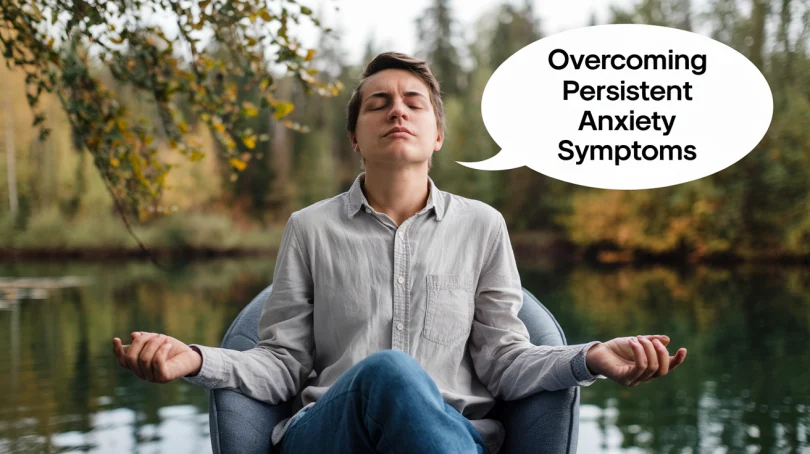Experiencing anxiety can feel like a never-ending cycle of fear and discomfort. For many individuals, anxiety manifests itself through various overlooked symptoms that can drastically affect daily life. In this article, we will explore these symptoms, their underlying causes, and provide actionable steps toward healing and managing anxiety effectively. Understanding your own experiences can be the first step toward reclaiming peace and balance.
Understanding Anxiety Symptoms
It’s crucial to recognize that anxiety can operate silently, often developing in response to stressors both in the environment and internally. The symptoms may vary widely, but they stem from a common source: a disregulated nervous system. Let’s delve into some personal symptoms experienced, what they signify, and how to combat them.
Common Anxiety Symptoms
Here’s a list of symptoms that many people, including myself, may experience:
- Urgency: A perpetual feeling of needing to act quickly whether it’s rushing to shower or compulsively checking the news.
- Dizziness: A constant state of dizziness can be debilitating, making everyday tasks overwhelming.
- Vertigo: Especially noticeable when getting in and out of bed, adding to the discomfort.
- Muscle Twitching: Frequent twitching can create fears of serious neurological conditions.
- Trembling: A physical response often linked to emotional or mental exertion.
- Brain Fog: This can lead to difficulties with concentration and memory retention.
- Chronic Fatigue: Exhaustion that doesn’t resolve with rest is common among anxiety sufferers.
- Irritability: An underlying tension that can lead to quickly becoming upset or annoyed.
- Sleep Disturbances: Trouble winding down at night can exacerbate feelings of anxiety the following day.
- Heightened Sensitivity: Increased sensitivity to sound and light can make busy environments feel overwhelming.
These symptoms can feel isolating and disheartening, but recognizing that many share these experiences is essential to healing.
What Keeps Symptoms Alive?
A significant factor contributing to the persistence of these symptoms is the mind’s association with fear and control. For instance, many individuals seek frequent reassurance from doctors or others, leading to a cycle where anxiety symptoms are intensified rather than alleviated.
The Cycle of Anxiety
- Seeking Control: When we feel anxious, we often seek certainty—a natural response. However, this chase for control can exacerbate anxiety, causing symptoms to intensify.
- Identifying with Fear: Labeling oneself with negative identities can keep the nervous system in a state of alert and fear of failure.
- Avoiding Conflict: Engaging in or seeking out conflict can also fuel anxiety. Often, we look for problems to focus on, which diverts our attention from potential solutions or inner peace.
Steps Toward Healing
If you’ve been checked for structural issues and wish to tackle the emotional and mental roots of your anxiety, here are some actionable strategies:
1. Acknowledge and Validate Symptoms
Recognizing the presence of symptoms is the first step toward managing them.
- Acknowledge: When a symptom arises, say, “I acknowledge you; you’re here.” This helps in alleviating the internal struggle against experiencing discomfort.
- Allow: Give permission for the symptom to exist without trying to eradicate it instantly. Say, “I allow you to be here.”
2. Respond to Symptoms Mindfully
Instead of fighting against anxiety, shift your approach.
- Communicate: Treat your symptoms as a message from your body needing attention. Reassure that you hear them.
- Stay Engaged: Continue participating in life as symptoms come and go. This helps in reducing the power they hold over you.
3. Create a Safe Environment
Your immediate surroundings and self-talk significantly impact your anxiety levels.
- Physical Space: Reduce overwhelming stimuli in your immediate environment when possible.
- Positive Reinforcement: Surround yourself with supportive individuals and engage in activities that promote peace.
Understanding the Healing Process
Healing is not an overnight journey. It is a gradual process that requires persistence and self-compassion. You must devote yourself to self-care practices and remain patient—often months or years are required to experience significant change.
The Role of Routine
Establishing a routine that includes mindfulness, exercise, and healthy nutrition can greatly benefit those managing anxiety. Think about incorporating practices such as:
- Daily Meditation: Helps quiet the mind and centers your focus.
- Regular Physical Activity: Acts as a natural mood booster and alleviates physical tension.
- Therapeutic Journaling: A powerful tool to express feelings and track your emotional journey.
- Breath Exercises: Calm your nervous system and help manage acute anxiety moments.
Conclusion
Navigating the complicated landscape of anxiety symptoms is a challenging but ultimately rewarding journey. By understanding the roots of these feelings, acknowledging them, and learning to respond in healthier ways, you can break the cycle of anxiety. Remember, the journey towards healing is personal and unique; while it may take time, dedicating yourself to these principles can lead to greater peace.
We invite you to take the first step today. Engage with your inner self, recognize your feelings, and stay committed to your healing journey. Sharing this journey with those around you can also foster support and understanding. Consider passing this article along to someone who might benefit from it, and begin to cultivate a community of healing together.
If you’re ready to transform your relationship with anxiety, start implementing these strategies, and don’t hesitate to reach out for help or guidance when needed. You are not alone in this fight; together, we can conquer anxiety.


